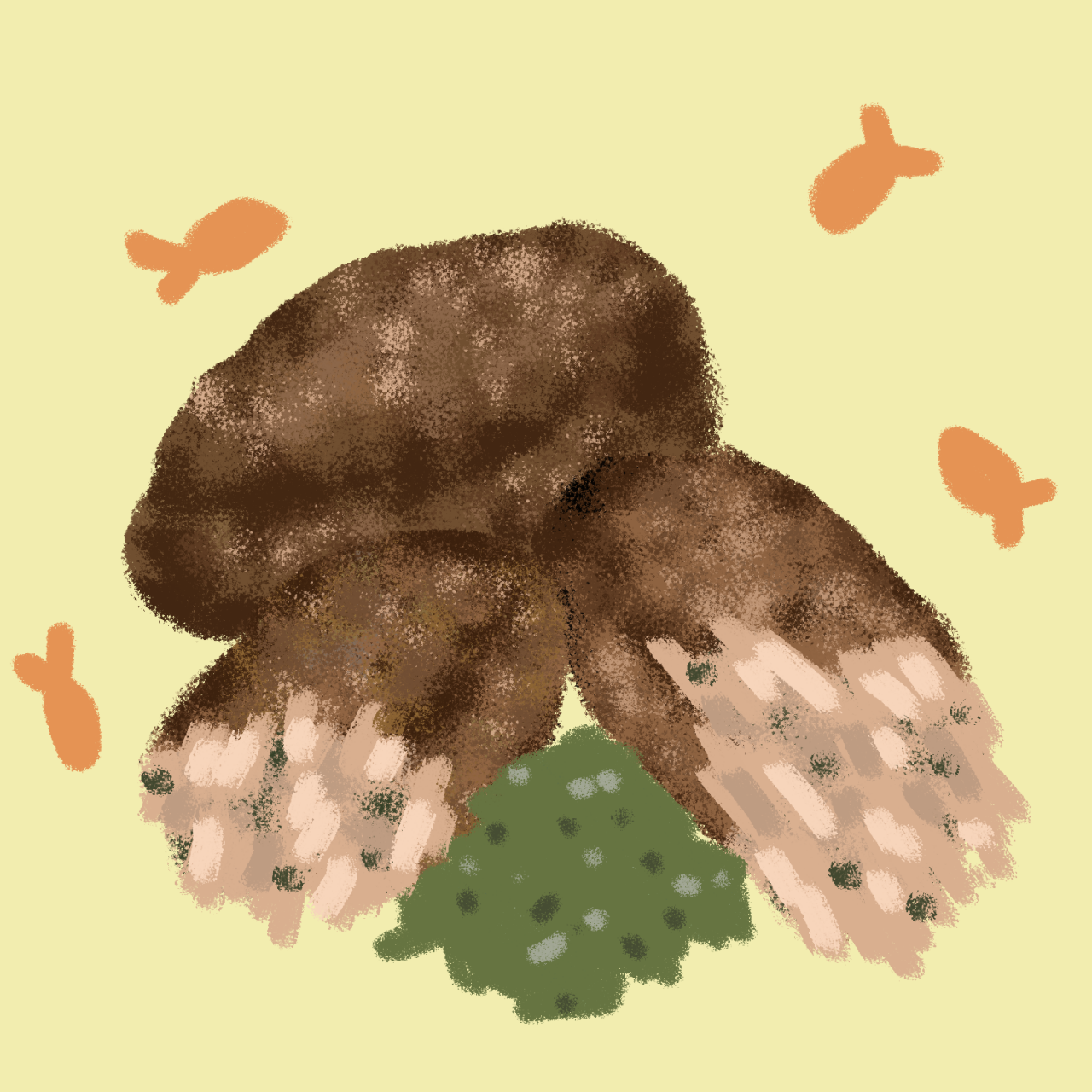Illustration by Ren Rader
As much as I hate being a part of the Indian-American diaspora, it’s really funny how much I can’t help seeing the parallels of my lives. In India, my family lived in a small coastal town of Odisha, about 15 minutes from the beach. When I was about three-and-a-half we moved to Houston, a large Gulf city about 40 minutes from the beach. In a way, my family never really felt far from home, because everything was basically the same. We would have the same weather, the same hurricanes (although Asians refer to them as cyclones) and, most importantly, seafood.
I remember one of the first times my mom took me to an Asian market. Houston had plenty of them, and there were three different large Asian grocery stores near our home. I think it came as a bit of a shock the first time she walked into the seafood section and saw many different types of fish she never thought she would see again, set at prices HEB could only dream of. Rui fish was a fish only common in east India, except now it was in this random Asian supermarket in the suburbs of Houston. In a way it did feel like some weird, reach of a metaphor. Was I the Rui fish? Only available in these two regions, prepared differently depending on where you find me, intrinsically still the same. The comparison sounded deeper in my head when I thought I was an edgy 14-year-old. I’m basically Rupi Kaur.
Seafood is probably what is keeping my little town in Odisha going. It’s a way of life, and people do not joke around about their seafood there. Whenever we visit home, my uncle makes sure to order a bunch of crabs in the morning, and my aunts would spend all afternoon cooking them perfectly to make the best crab curry (kankada tarkari) in the world (totally unbiased opinion). We would then sit at the table for over an hour, cracking open crabs with our hands and savouring every piece. No one’s heard of seafood crackers in India, you used your hands, teeth and pure determination to crack open a crab leg. Maybe that’s why we tend to enjoy it more. As they say in Hindi, mehnat ka phal meetha hota hai — the fruit of hard work is sweet. Coming back from the beach and ending my day by sitting with my cousins, cracking open crabs and mixing them into our rice is one of my most prominent memories of India, and an experience I hold dearly.
Although my mom makes kankada tarkari on very special occasions at home, it never feels the same. In the rush of American life, no one has time to sit at a dining table for hours, bonding over the struggle of trying to open a crab leg with your bare hands. It reflects on a lot of experiences the Indian diaspora tries to recreate in America; it never brings the same level of happiness, and just makes you miss the original even more. In a way, it makes me sadder, and it’s why I try to avoid them. Every time, whether it’s celebrating Diwali at Trinity or eating crab curry, brings sharp painful memories about how “it’s not the same.” As I grow older, I realize there’s no way to live happily if I keep comparing all new moments to an ideal time that will never come back. So if anyone would like to cook a spicy crab curry soon and talk about life, hit me up.
To conclude this mess of me being haunted by the Indian-American diaspora, here is a Rupi Kaur inspired poem:
my heart like a rui maach
swimming between two oceans
spiced and unspiced
which plate do i call my home?
~natasha sahu
Maacher Chop (Fish Croquettes)
Serving size: 12-14 croquettes
Ingredients
Paste:
-
½ onion
-
3 Thai green chilies (or 2 serranos)
-
4 cloves of garlic
-
2 tbsp ginger
-
½ bunch cilantro
-
1 tsp olive oil
Fish:
-
½ pound tilapia fillets (you can also use canned tuna, carp, or salmon if you’re bougie)
-
1 tbsp garam masala
-
1 tsp cayenne
-
¼ tsp turmeric
-
1 pinch cinnamon powder
-
Salt and pepper to taste
-
2 tbsp olive oil
-
1 russet potato, boiled and mashed
Dredging:
-
2 eggs, whisked
-
½ cup flour
-
1 cup bread crumbs
-
Add ¼ tsp chili powder, ¼ tsp garam masala and salt and pepper
Boil fish:
-
Heat about 3–4 cups of water and bring to a boil.
-
Add your fish and let it boil for about 8 minutes (it will get smelly).
-
Remove fish from the pot, pat dry to remove excess water and let cool.
-
Once cooled, shred the fish with a fork.
Cook the fish:
-
In a saucepan, fry onions on medium heat in the oil until tender.
-
Once cool, add the onions, ginger, garlic, chilies, cilantro and olive oil in a food processor and process until you made a paste.
-
In a large saute pan, add your fish, spices, and 3 tbsp of your paste and saute for about 5-7 minutes.
-
Once all the spices are evenly coated, add mashed potatoes and lime juice.
Turn off the heat and let the mixture cool.
Dredging:
-
Once cooled, put a little oil on your hands and roll the mixture into patty shapes, about 2 inches in diameter.
-
Set up a dredging station with one plate flour, one bowl of eggs and one plate of bread crumbs.
-
Dab the croquettes into flour (patting to remove excess), dip into the eggs and then drop into the bread crumbs, evenly coating all sides.
-
Repeat for all remaining fish patties and cool in the refrigerator for 30 minutes.
Frying:
-
I recommend shallow frying. Heat up ¼ cup of vegetable or canola oil in a sauté pan.
-
Put in the croquettes a few at a time, being careful not to crowd the pan.
-
Cook both sides on medium heat for 2-3 minutes each or until golden brown.
-
Remove from pan and place on a paper towel to soak up excess oil.
-
Repeat for the rest of the croquettes.
Serving recommendations: I ate mine with the salsa verde from the Tacos el Regio truck, and it was an amazing combination. Traditionally, it’s served with an Indian mustard sauce called kasundi, but any dip would work great (try a whole grain mustard!).
Note: You can also go as far as the dredging process and then put them in your freezer for up to a month. They make a great snack to fry whenever you want!







